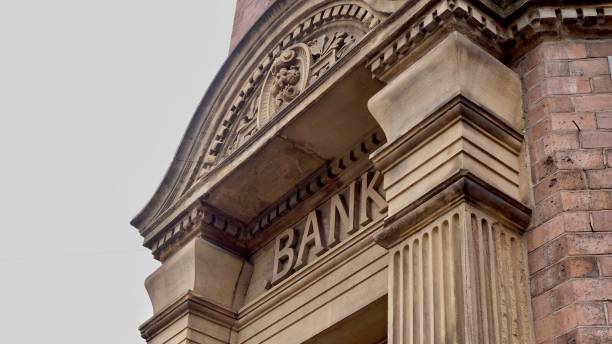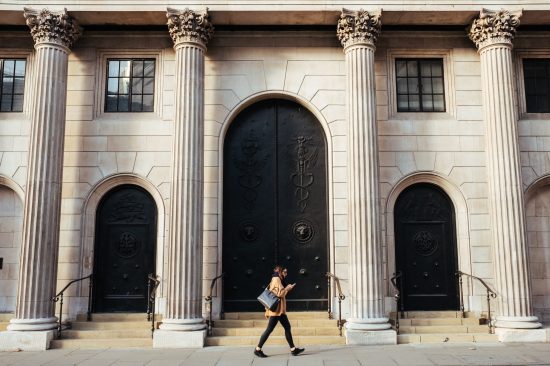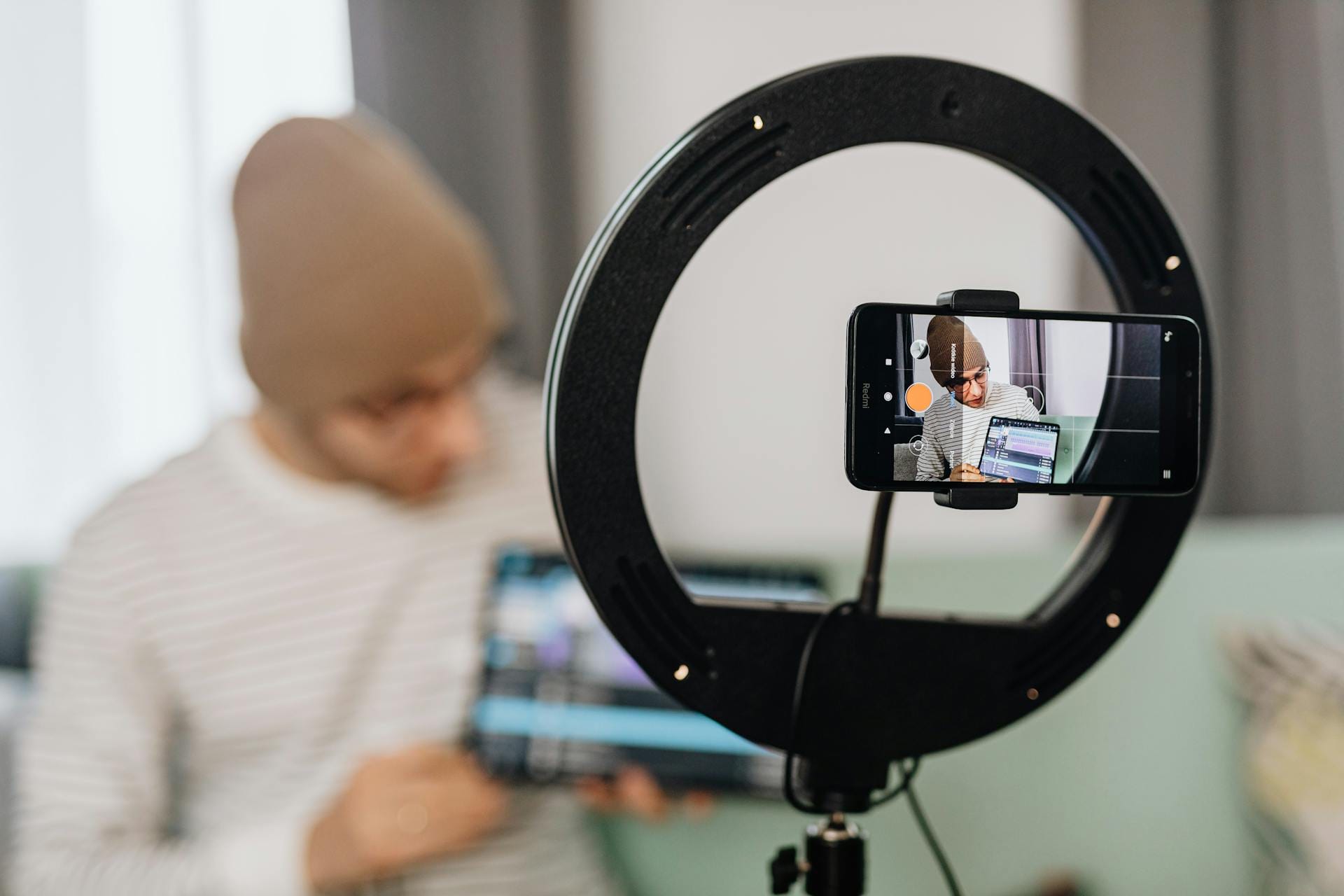
Types of Bank Accounts: How To Set Them Up & What To Avoid
In this article, we’re going to cover the types of bank accounts, which ones you should have, and what each one can do for you.
The two primary types of bank accounts are checking and savings accounts. For most people, these are the two accounts they interact with the most in their daily lives.
It’s important to know how to set them up and how to make them work for you so you can get the most out of them.
Checking Accounts
Your checking account is the backbone of your financial system. It’s where your money will be deposited before it’s filtered to different parts of your system, like your savings account, your investing account, and your guilt-free spending. That’s why I believe in picking the best account, then moving on.
As you know, checking accounts let you deposit money and withdraw money using debit cards, checks, and online transfers.
I think of my checking account like an email inbox: All my money goes in my checking account, and then I regularly distribute it to appropriate accounts, like savings and investing, using automatic transfers.
I pay most of my bills through my credit card, but the bills I can’t pay with my card like rent or my car payment I pay directly from my checking account using automatic transfers. Checking accounts are the number one place where unnecessary fees are levied, and we’re going to fix that.
Savings Accounts
Think of savings accounts as places for short-term (one month) to mid-term savings (five years). You want to use your savings account to save up for things like vacations and holiday gifts, or even longer-term items, like a wedding or the down payment on a house.
The key difference between checking and savings accounts is this: Savings accounts technically pay more interest. I say, technically, because on a practical level, the interest on your savings account is essentially meaningless.
The interest rate on your savings account is not all that important. Let’s assume you have $5,000 sitting in a savings account as part of your emergency fund.
If your bank offers you a 3 percent interest rate, that’s $150 per year, or $12.50 a month. If it’s a 0.5 percent interest rate, that’s $25 per year, or $2.08 per month. In short, who cares? $12.50 vs. $2 is not a huge difference when we’re talking about hundreds of thousands of dollars over our lives.
Stop focusing on picking up pennies and instead focus on the Big Wins to craft your Rich Life. Now that I’ve set up my investing accounts and automated them, the amount I earn from one year of investing is worth more than 500 years of interest in a savings account.
You heard that right. Don’t worry about micro-optimizing your bank account interest rates. Just pick great bank accounts and move on.
Why You Need Both Types Of Banks Accounts: Savings & Checking

The most important practical difference between checking accounts and savings accounts is that you withdraw money regularly from your checking account, but you rarely withdraw from your savings account.
Checking accounts are built for frequent withdrawals: They have debit cards and ATMs for your convenience. But your savings account is really a goals account, where every dollar is assigned to a specific item you’re saving up for, like a house, a vacation, or an emergency fund.
You might think I’d encourage you to have your checking account and savings account at the same place. Surprisingly, I recommend two different accounts at two separate banks.
Here’s why: Having your money in two separate accounts and banks uses psychology to keep your savings growing. One basic way of looking at it is that your savings account is where you deposit money, whereas your checking account is where you withdraw money.
In other words, if your friends want to go out on Friday night, you’re not going to say, “Hold on, guys, I need three business days to transfer money to my checking account.”
If you don’t have the money available in your discretionary (checking) account because you’ve spent your going-out money, you’ll know it. Having a separate savings account forces you to keep your long-term goals in mind instead of just blowing them off to have a few rounds of drinks.
Finally, in my experience, banks that try to offer checking and saving and investing tend to be mediocre at all of them. I want the best checking account, the best savings account, and the best investment account no matter where they are.
A crucial part of having a savings account is tracking your expenses. While it might seem tedious, here’s why you should track every penny:
Right now, you might be saying to yourself, Why should I bother with a savings account? I only have $300. I hear this all the time. It’s true, the interest you’ll be earning on that kind of money isn’t really that much.
To me, that’s the perfect time to start: when the stakes are low. Build the right habits when the amounts are small with the right accounts, with automatic saving and investing, so that when your income increases, your habits are rock-solid.
We’re cutting our teeth with small amounts of money, sure. But as our savings accounts increase from $5,000 and $10,000 to $100,000 to $1 million and beyond, the habits really start to matter. Start now so that when you do have a lot of money, you’ll know what to do with it.
How To Set Up Your Bank Accounts
I’ll tell you my favorite accounts as we go along. But before you go about finding the specific banks and accounts you want to use, take a minute to consider the bigger picture. You want to pick accounts that work well with your personality.
You have to know yourself: Do you value simplicity? Or are you the kind of person who wants to spend your time building a complicated system for a slightly larger payout? For most people, another option (basic option + small optimization) is perfect.
Most basic option (good for lazy people)
A checking account and a savings account at any local bank. This is the bare minimum. Even if you already have these accounts, it’s worth talking to your bank to be sure you’re not paying fees.
Basic option + small optimization (recommended for most people)
This option means opening accounts at two separate institutions: a no-fee checking account at your local bank and a high-yield online savings account.
With the checking account, you’ll have immediate access to your money and free cash transfers to your high-interest online savings account. You can also deposit cash through your local bank. If you already have this setup, great! Just call to make sure you’re not paying unnecessary fees.
Advanced setup + full optimization (perfect for people who read things like Lifehacker and The 4-Hour Workweek)
This setup consists of maintaining several checking accounts and savings accounts at different banks, usually to eke out the most interest and services that various banks have to offer.
For example, I have an interest-bearing checking account at an online bank and a savings account at a different online bank.
Although you can set up automatic online transfers, having multiple banks means multiple websites, multiple customer-service numbers, and multiple passwords.
Some people find this overly complicated, if you’re one of them, stick to a more basic setup, unless it’s very important to you to fully optimize your bank accounts. (Personally, I think this option is awesome.)
Ready to take control of your finances (without tedious budgeting?) Get the first chapter of Ramit Sethi's NYT Bestselling Book below.
How My Bank Accounts Work
Here are the accounts I use and how I’ve set them up to work together.
MY ACCOUNTS. All of my money goes through my interest-bearing Schwab online checking account. Deposits happen through direct deposit or by taking a photo of a check and depositing it through the Schwab app.
MY SYSTEM. My finances work on a monthly cycle, and my system automatically disburses money where it needs to go. I’ve set up accounts to draw from my checking account.
For example, my Capital One 360 savings account automatically withdraws a certain amount every month from my checking account, as does my investment account.
For rewards, tracking, and consumer protection, I pay my bills using my credit card. The credit card is automatically paid in full every month by my online checking account.
For cash expenses, I use the Schwab ATM card to withdraw money at any ATM nationwide. All ATM charges are automatically reimbursed at the end of the month.
Generally, I use my Capital One 360 account as a receiver, not a sender: I rarely transfer money out of there unless I need to cover a temporary shortage in my checking account or want to spend savings money on something important, like a vacation.
Choosing Bank Account Type
Depending on what accounts you already have and what setup you’ve opted to go with, getting this part of your financial infrastructure squared away may be as easy as making small changes to accounts you’ve had for a while. Or you may need to open new accounts, which can be pretty overwhelming.
As usual with financial decisions, we have too many options, leading most of us to make less-than-ideal choices like opening a bank account in college and then staying with that bank forever. There are some good accounts out there, but of course, banks don’t always make these deals easy to find.
Most traditional banks offer different checking and savings accounts to serve customers with different needs and amounts of money. They start at student accounts, which are bare-bones accounts with no fees, no minimums, and few value-added services. These are usually perfect for young people.
Next, they offer accounts that have nominal monthly fees. They also offer ways for you to get these fees waived, like using direct deposit (where your paycheck is automatically sent to your bank every month) or maintaining a minimum balance. If your employer offers direct deposit, these accounts might be a good choice.
Finally, banks offer higher-end accounts with higher minimums, often $5,000 or $10,000, and more services, like commission-free brokerage trades (which you should avoid since banks are the last place you should invest), bonus, interest rates, and discounts on home loans.
These accounts are worthless. Avoid them. If you have that much money lying around, I’ll show you how to put it to work in and earn more than any bank could give you.
You should research the options at a few different banks. You can compare these banks in less than an hour by going to their websites, or you can just use the banks I use.
Beyond just the type of accounts offered, there’s more to consider when choosing your bank(s). I look for three things: trust, convenience, and features.
Frequently Asked Questions About Types of Bank Accounts
What are the 4 types of bank accounts?
4 Common types of bank accounts:
- Checking account
- Savings Account
- Certificate of Deposit
- Money Market Account
What are the 7 types of checking accounts?
7 types of checking accounts:
- Traditional checking account
- Student checking account
- Senior checking account
- High Interest checking account
- Business checking account
- Checkless checking account
- Reward checking account
- Private bank checking account
Can I open 2 accounts in the same bank?
Banks will let you have more than one account with them at the same time. There aren’t any hard restrictions for how many accounts you can open at a financial institution. Although you might be more inclined to go to more than one bank.
If you liked this post, you’d LOVE my Ultimate Guide to Personal Finance
It’s one of the best things I’ve published, and totally free – just tell me where to send it:
Comments are closed.



